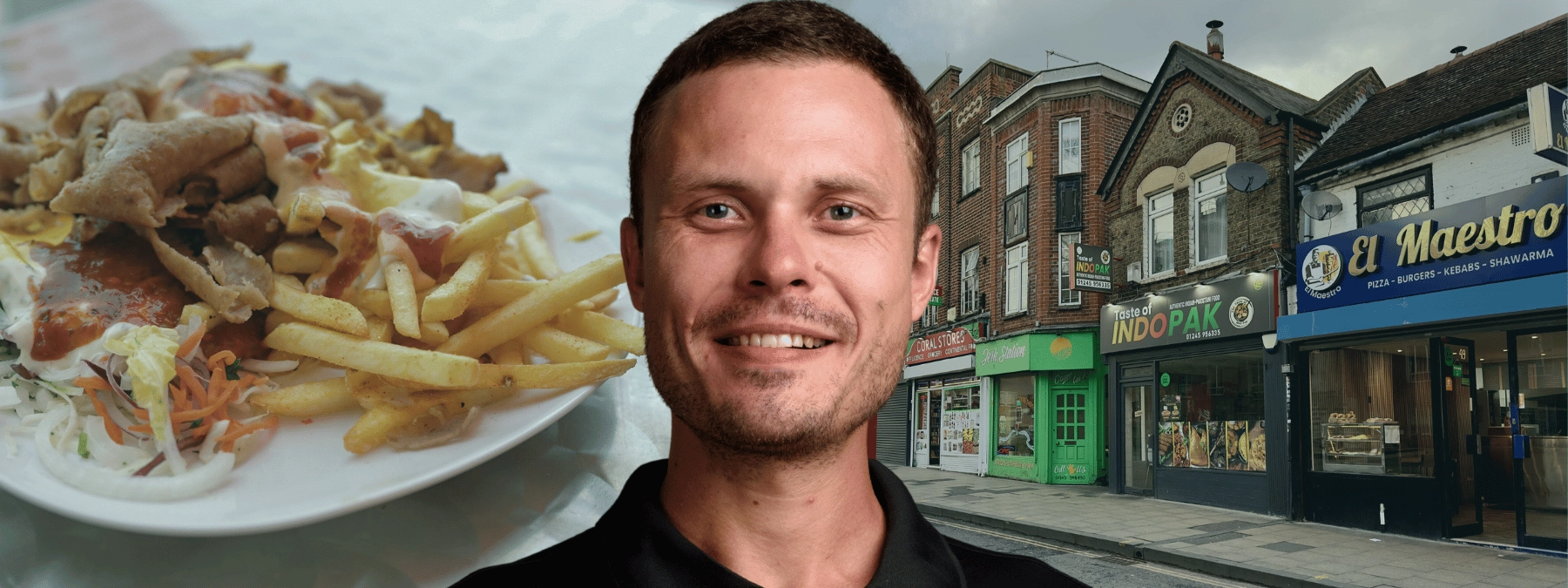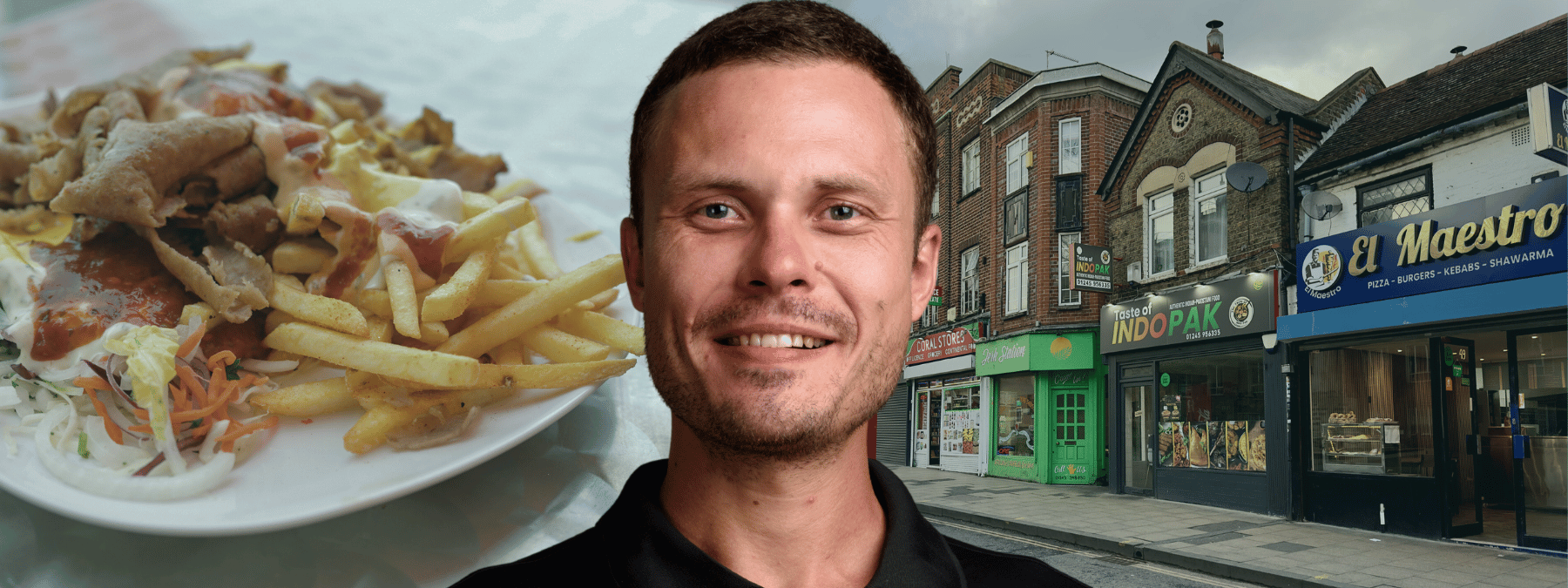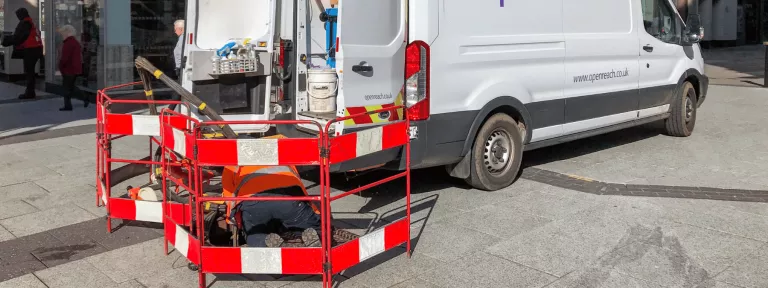
Running a takeaway business can be a high-energy affair - literally. Whether it’s sizzling woks, deep fryers, or constant refrigeration, the energy demands of a bustling takeaway business can significantly impact your bottom line.
Our recent study shows that the UK’s favourite takeaway treats come at a big cost to businesses, with the average takeaway shop using 8,000- 12,000 kW a year to cook our favourite foods.
So, which takeaway foods cost the most to cook, and how are the prices of business energy impacting the UK’s favourite takeaway treats?
In this blog, we explore how much it costs takeaway shops to run the kitchen appliances that make popular dishes, and how energy price changes impact the UK’s favourite takeaway restaurants.
How Much Do Takeaway Shops Spend on Energy Each Year for Cooking Appliances?
Takeaway shops spend £16,909.38 on electricity on average per year just for cooking appliances, research from BusinessComparison reveals.
Our study analysed the most common appliances used by takeaway restaurants, how much energy these appliances use, and the current energy price costs to assess the real cost of cooking takeaway food for small businesses.
Which Takeaway Shops Use the Most Energy?
Indian takeaways top the chart, with an average yearly energy cost of £21,762.32. Their frequent use of tandoori ovens, fryers, rice cookers and hot holding units drives these costs sky-high.
Kebab shops follow closely, spending over £20,500 a year - likely due to the continuous operation of vertical rotisseries, grills and refrigeration.
Chinese takeaways also rack up significant bills at £20,380 annually, thanks to high-powered wok burners, deep fryers and steamers.
When it comes to mid-tier energy outputs, Mexican takeaways, burger joints, and fish and chip shops sit in the mid-range, each with annual costs ranging from £15,000 to £19,000. These businesses commonly rely on fryers, griddles and warming displays, which contribute to steady but slightly lower energy usage.
At the lower end, pizza shops, sandwich shops, bakeries and coffee shops incur more modest energy bills. For instance, a sandwich shop spends about £9,592 per year, thanks to lighter equipment use like blenders, under-counter fridges and toasters.
Which Takeaway Shops Have the Highest Energy Bills?
|
Per hour |
Per day |
Per week |
Per month |
Per year |
||
|
1 |
Indian |
£7.56 |
£60.45 |
£264.47 |
£116.57 |
£21,762.32 |
|
2 |
Kebab |
£7.12 |
£57.02 |
£249.44 |
£1,710.47 |
£20,525.64 |
|
3 |
Chinese |
£7.08 |
£56.61 |
£247.68 |
£1,698.36 |
£20,380.32 |
|
4 |
Mexican |
£6.62 |
£52.94 |
£231.62 |
£1,588.25 |
£19,058.98 |
|
5 |
Burger |
£6.63 |
£53.01 |
£231.92 |
£1,590.28 |
£19,083.34 |
|
6 |
Fish and chips |
£5.84 |
£46.72 |
£204.41 |
£1,401.64 |
£16,819.66 |
|
7 |
Fried chicken |
£5.52 |
£44.13 |
£193.06 |
£1,323.83 |
£15,885.96 |
|
8 |
Bakery/coffee |
£4.60 |
£36.81 |
£161.04 |
£1,104.24 |
£13,250.88 |
|
9 |
Pizza |
£4.42 |
£35.37 |
£154.76 |
£1,061.20 |
£12,734.38 |
|
10 |
Sandwich/deli |
£3.33 |
£26.65 |
£116.57 |
£799.36 |
£9,592.30 |
Which are the most expensive appliances for takeaway shops to run?
Kebab machines are the most expensive cooking appliance for takeaway shops to run, costing £7,248.38 a year on average.
When it comes to managing energy costs in a takeaway kitchen, not all appliances are created equal. Our study found that there are some energy-hungry appliances that are eating up takeaway shops' budgets.
Table: Which are the most expensive cooking appliances for takeaway shops to run?
The chart below shows the top ten most expensive appliances to run based on annual energy costs.
|
Appliance category |
Avg. power (kW per hour) |
Per hour (£) |
Per day (8h) |
Per week (35h) |
Per month (30d) |
Per year (12m) |
|
|
1 |
Kebab machines |
10.4 |
£2.51 |
£20.13 |
£88.09 |
£604.03 |
£7,248.38 |
|
2 |
Wok burners |
8 |
£2.16 |
£17.28 |
£75.60 |
£518.40 |
£6,220.80 |
|
3 |
Barbecues |
7 |
£1.89 |
£15.12 |
£66.15 |
£453.60 |
£5,443.20 |
|
4 |
Chargrills |
6 |
£1.62 |
£12.96 |
£56.70 |
£388.80 |
£4,665.60 |
|
5 |
Combi ovens |
6 |
£1.62 |
£12.96 |
£56.70 |
£388.80 |
£4,665.60 |
|
6 |
Fryers |
5 |
£1.21 |
£9.68 |
£42.35 |
£290.40 |
£3,484.80 |
|
7 |
Pizza ovens |
5 |
£1.21 |
£9.68 |
£42.35 |
£290.40 |
£3,484.80 |
|
8 |
Blast chillers |
3.5 |
£0.95 |
£7.56 |
£33.08 |
£226.80 |
£2,721.60 |
|
9 |
Salamander grills |
3.2 |
£0.85 |
£6.80 |
£29.77 |
£204.12 |
£2,449.44 |
|
10 |
Hot water urns |
3 |
£0.81 |
£6.48 |
£28.35 |
£194.40 |
£2,332.80 |
Kebab machines take the top spot with a staggering average power draw of 10.4 kW, costing £2.51 per hour to run. If used for a full 8-hour day, that’s over £7,200 annually - a hefty price for sizzling meat on a spit.
Close behind are wok burners, barbecues, and chargrills - all staples of high-heat, high-speed cooking. Wok burners in particular cost over £6,200 per year to run, driven by their intense heat output and long operating hours.
Combi ovens and deep fryers are equally costly, each exceeding £3,400 a year in energy use. Pizza ovens also match fryer usage, underlining how heavy-duty cooking gear contributes to major operational costs.
Even appliances like blast chillers, salamander grills and hot water urns, while seemingly less intense, still add from hundreds to thousands to annual bills. For example, a single hot water urn racks up £2,332.80 a year if run full-time.

Which Are the Cheapest Appliances for Takeaway Shops To Run?
It’s good news for customers who like to slurp up drink options at their favourite takeaway shop, as water dispensers, cold juice dispensers and slushie machines were ranked among the cheapest appliances for businesses to run.
While some takeaway appliances guzzle electricity, others barely make a dent in your energy bill.
Table: Which are the cheapest appliances for takeaway shops to run?
The chart below shows the top ten least expensive appliances to run based on annual energy costs.
|
Appliance |
Avg. power (kW per hour) |
Per hour (£) |
Per day (8h) |
Per week (35h) |
Per month (30d) |
Per year (12m) |
|
|
1 |
Water dispensers |
0.05 |
£0.01 |
£0.10 |
£0.42 |
£2.90 |
£34.85 |
|
2 |
Countertop fridges |
0.18 |
£0.04 |
£0.35 |
£1.52 |
£10.45 |
£125.45 |
|
3 |
Juice dispensers |
0.2 |
£0.05 |
£0.39 |
£1.69 |
£11.62 |
£139.39 |
|
4 |
Meat slicers |
0.2 |
£0.05 |
£0.39 |
£1.70 |
£11.66 |
£139.97 |
|
5 |
Mini fridges |
0.2 |
£0.05 |
£0.43 |
£1.89 |
£12.96 |
£155.52 |
|
6 |
Upright fridges |
0.25 |
£0.06 |
£0.48 |
£2.12 |
£14.52 |
£174.24 |
|
7 |
Veg prep machines |
0.25 |
£0.07 |
£0.54 |
£2.36 |
£16.20 |
£194.40 |
|
8 |
Drinks fridges |
0.3 |
£0.07 |
£0.58 |
£2.54 |
£17.42 |
£209.09 |
|
9 |
Mini freezers |
0.3 |
£0.08 |
£0.65 |
£2.84 |
£19.44 |
£233.28 |
|
10 |
Chest freezers |
0.3 |
£0.08 |
0.65 |
£2.84 |
£19.44 |
£233.28 |
Water dispensers are typically the cheapest appliance for takeaway shops to run, consuming just 0.05 kW per hour and costing business owners just £34.85 a year.
Cold juice dispensers and slushie machines might work hard to keep your favourite drinks cold and fresh, but they’re actually pretty low on energy consumption, racking up just 0.20 kW per hour and costing £139.39 to run a year.
Cold storage appliances like countertop fridges, under-counter fridges, and chest freezers are also low-energy champs. Even when used daily, most cost well under £250 annually. This makes them essential but energy-efficient fixtures for any food service operation.
Vegetable prep machines and meat slicers may seem like serious hardware, but they’re surprisingly affordable to run, costing just £139-£195 per year, depending on usage.
How Do Energy Price Increases Impact Takeaway Shop Owners?
Energy prices can frequently change, so for our analysis, we used a baseline electricity rate of £0.24 per unit, which is fairly standard.
But for takeaway shops, that rate can fluctuate based on business size, energy usage, and supplier agreements. Rates can range from £0.24 to £0.27 per unit, and the difference adds up fast.
For example:
• A fish and chip shop paying 1p more per unit (from £0.24 to £0.25) will spend an extra £1,026 a year on cooking appliance costs.
• If that rate jumps by 3p (to £0.27), the additional annual cost soars to over £3,078.
• For high-use businesses like pizza shops, a 3p rise results in nearly £4,000 extra per year.
Even smaller players like Mexican takeaways or coffee shops could see their bills increase by over £2,500 annually under less favourable energy contracts.
Table: How could energy price increases impact the cost of energy that takeaway shops pay over the course of a year?
|
Annual cost of energy at 24p per unit |
Additional cost if energy goes up by 1p per unit |
Additional cost if energy goes up by 3p per unit |
|
|
Fish and chips |
£24,627.46 |
£1,026.14 |
£3,078.43 |
|
Kebab |
£24,627.46 |
£977.76 |
£2,933.28 |
|
Chinese |
£21,814.27 |
£908.93 |
£2,726.78 |
|
Indian |
£20,259.07 |
£844.13 |
£2,532.38 |
|
Pizza |
£31,691.52 |
£1,320.48 |
£3,961.44 |
|
Sandwich/deli |
£29,638.66 |
£1,234.94 |
£3,704.83 |
|
Fried chicken |
£25,076.74 |
£1,044.86 |
£3,134.59 |
|
Burger |
£21,945.60 |
£914.40 |
£2,743.20 |
|
Bakery/coffee |
£21,033.22 |
£876.38 |
£2,629.15 |
|
Mexican |
£19,395.07 |
£808.13 |
£2,424.38 |
What This Means for Takeaway Shop Business Owners
Energy use is one of the most significant operational costs in a food business, and this data helps illustrate where those pounds are going.
For high-usage businesses, it’s worth investing in energy-efficient equipment, implementing smart usage practices, and regularly servicing appliances to keep bills under control.
Whether you're running a bustling curry house or a small panini café, being energy-conscious can go a long way in boosting your margins.
Reducing your bills starts with understanding how much power your appliances use. Our energy appliance calculator will provide you with a simple tool that lets you quickly estimate the running costs of equipment in your workplace.
Select the appliances you use, enter their usage frequency and duration, and our tool will estimate your electricity consumption and associated costs.
Methodology
Energy price costs:
BusinessComparison has used a blend of proprietary data and weekly energy price costs from Bionic to assess average energy prices for businesses in the UK.
Appliance costs:
Using a leading appliance retailer website, BusinessComparison has used AI to analyse product category pages to create average figures of energy consumption of each cooking appliance, based on 20 product listings on the page.
A blend of AI and editorial content has been used to identify the top 15 cooking appliances for each takeaway shop.
We have then calculated the average energy consumption for each appliance based on hour, day (8 hours), week (35 hours), month (30 days) and year (12 months).
Actual energy consumption may vary depending on a takeaway shop’s own inventory, appliance use and supplier prices.
Ready to Cut Your Energy Costs?
If you're running a takeaway or small business, there's no reason to overpay for your power. With energy rates varying widely, switching to a better deal could save you hundreds or even thousands each year. Don’t wait for your next eye-watering bill - take control now.
Compare business energy deals today and see how much you could save. It only takes a few minutes, and it could be one of the smartest financial moves you make this year.











.jpg)




